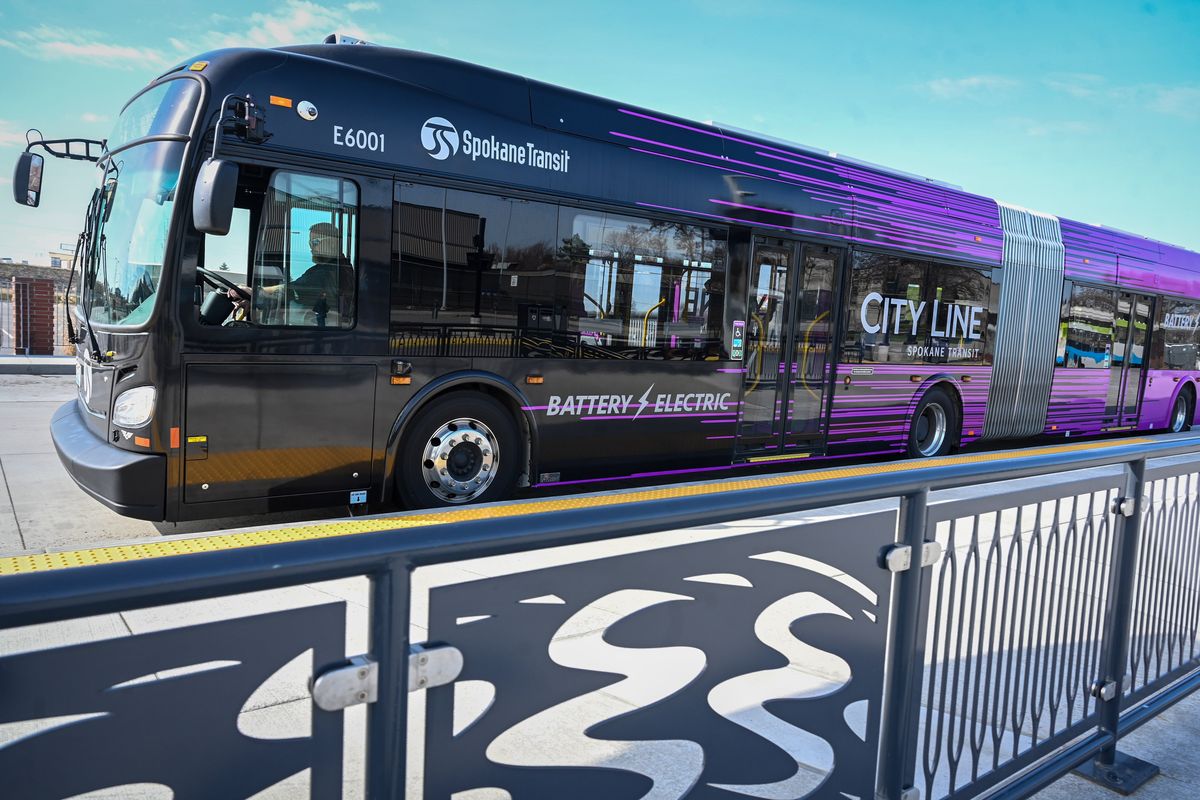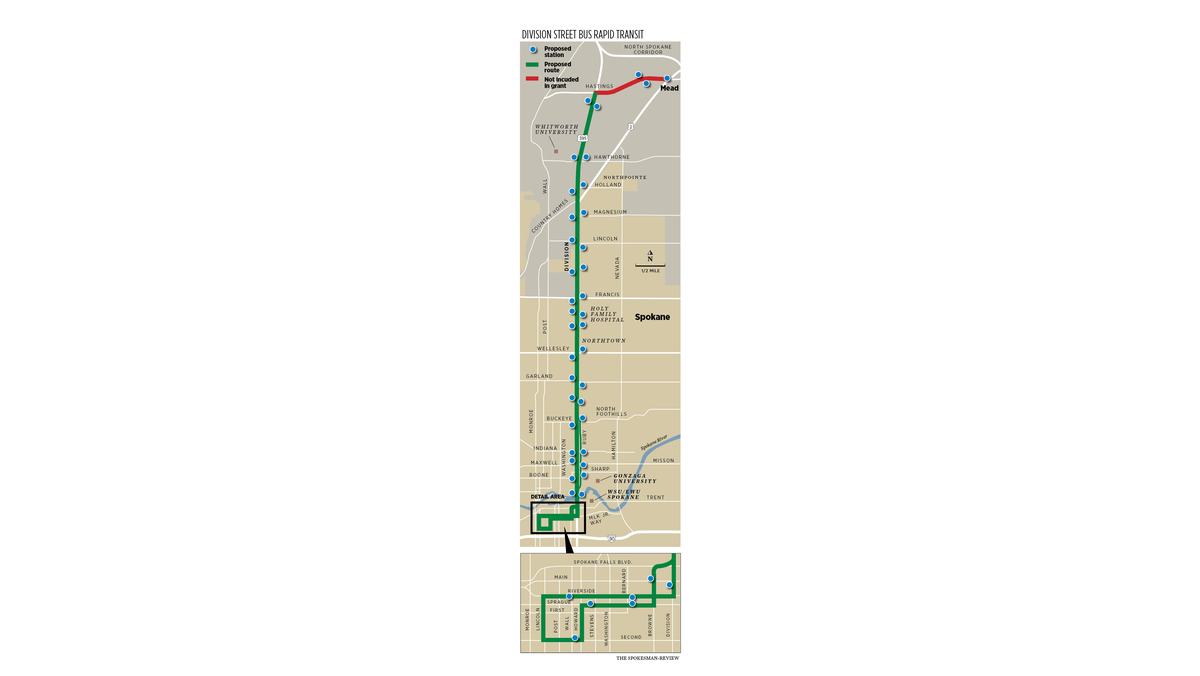STA lands $2 million grant for Division Street rapid bus route to Mead
A new rapid transit City Line bus pauses at Spokane Community College, Friday, April 14, 2023. (DAN PELLE/THE SPOKESMAN-REVIEW)
The U.S. Department of Transportation awarded Spokane Transit Authority a $2 million grant Friday to further the design of transportation improvements through one of Spokane’s busiest streets.
The Division Street Bus Rapid Transit project will connect downtown Spokane to the Mead area following the completion of the North Spokane Corridor in 2030.
Spokane City Councilwoman Kitty Klitzke, who represents northwest Spokane and sits on the STA board, said the project will benefit a large portion of STA’s ridership, including her constituents looking to get downtown quicker, Mead residents hoping to drop their daily commute into the city, and the many riders who use stops along Division to switch routes and catch other buses.
“They don’t even have to look at a schedule, which is one of the good things about BRT: It comes so frequently that you don’t have to have a plan,” Klitzke said, using the acronym for bus rapid transit. “You just get to the stop, and eventually something’s coming pretty soon.”
STA’s first rapid transit route is the City Line, which opened in 2023 and runs through downtown to Spokane Community College. Rapid bus routes have infrastructure that supports more efficient and higher-volume service, STA spokeswoman Carly Cortright said.
The grant supports a design effort from the Spokane Regional Transportation Council and partner agencies, including the City of Spokane, Spokane County and Washington State Department of Transportation.
About 40 stations at major intersections will have elevated platforms to allow quicker boarding. The far right lane would be dedicated to the buses and traffic turning right. Service is expected at least every 15 minutes.
Although the location is still being worked out, the 10-mile route would end at a new transit center in Mead, Cortright said.
Klitzke said she’s excited to bolster services along the thoroughfare.
“That’s one of the next big steps in trying to create not just a transit experience, but a mass transit experience in Spokane, and to increase our efficiency and connectivity across routes,” Klitzke said.
Like City Line, the Division Street route also will use electric 60-foot articulated buses.
Klitzke said the additional capacity is much needed. She recalled how when she lived on Wellesley Avenue as a young adult, she would frequently see buses fill up, especially during adverse weather events like large snow storms.
“There were multiple times way back then when I would have to wait for the next bus because the bus would be full,” Klitzke said. “So I’m really looking forward to this. This is a huge step in mobility for people like I was.”
Other Division corridor improvements would include new and enhanced bike lanes and pedestrian features. Construction is not expected to start until 2027.
Service would begin after the North Spokane Corridor connecting Interstate 90 to U.S. Highway 2 and 395 opens. At that point, there should be less traffic on Division, which will make the rapid bus service more efficient.
The grant is provided from the $544 million federal Reconnecting Communities Pilot Program under the Bipartisan Infrastructure Law.
“We’re pleased,” Klitzke said. “This is a plan that we’ve had going for a very long time.”

